Instructions for a Illicit Discharge
Report potential Illicit discharges, improper disposal or spills to the Norfolk State University Police Department at 757-823-9000. When reporting the incident, be specific about the nature of the materials involved and exact location. University Police will contact the necessary personnel. Please contact the EHS&RM regarding land disturbing activities or other potential stormwater concerns. Please review the Norfolk State University Illicit Discharge Detection and Elimination program for additional information.
Stormwater Pollution Prevention - MS4 Program
What is Stormwater Runoff?
Stormwater Runoff is largely Rain or snowmelt flows over impervious surfaces.
Stormwater runoff, caused when precipitation from rain or snowmelt flows over impervious surfaces such as driveways, sidewalks, and streets, also presents a major problem. Along the way, stormwater can pick up oil from automobiles, pesticides, fertilizers from gardens, micro-organisms from animal waste, and other toxic substances, depositing them into our waterways, where they damage plants, fish, animals and people.
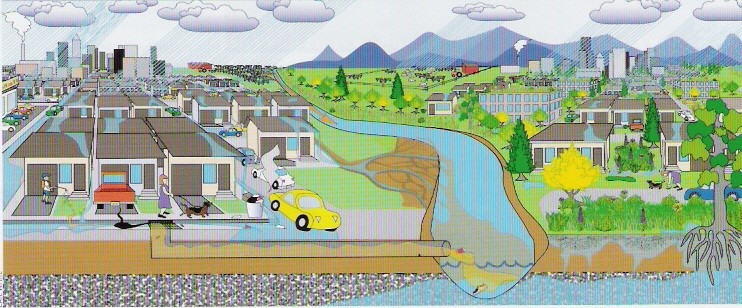
Why is stormwater runoff a problem?
Stormwater Runoff picks up fertilizer and pollutants that flow into a watershed
Stormwater runoff can pick up debris, chemicals, dirt, and other pollutants and flow into a storm sewer system or directly into a lake, stream, river, wetland, or coastal water. Anything that enters a storm sewer system is discharged untreated into the water-bodies we use for swimming, fishing and providing drinking water. Fertilizers from home gardening and agriculture also create an abundance of algae blooms, starving waters of oxygen, causing fish kills.
The effects of pollution caused by stormwater runoff

Stormwater Pollution Causes - alternative text to image
Polluted stormwater runoff can have many adverse effects on plants, fish, animals and people.
- Sediment can cloud the water and make it difficult or impossible for aquatic plants to grown. Sediment also can destroy aquatic habitats.
- Excess nutrients can cause algae blooms. When algae die, they sink to the bottom and decompose in a process that removes oxygen from the water. Fish and other aquatic organisms can’t exist in water with low dissolved oxygen levels.
- Bacteria and other pathogens can wash into swimming areas and create health hazards, often making beach closures necessary.
- Debris - plastic bags, six-pack rings, bottles, and cigarette butts – washed into waterbodies can choke, suffocate, or disable aquatic life like ducks, fish, turtles, and birds.
- Household hazardous wastes like insecticides, pesticides, paint, solvents, used motor oil, and other auto fluids can poison aquatic life. Land animals and people can become sick from eating diseased fish and shellfish or ingesting polluted water.
Polluted stormwater often affects drinking water sources. This, in turn, can affect human health and increase drinking water treatment costs.

Polluted water discharged into a creek.
Stormwater Runoff Pollution Solutions
Residential home chemicals solutions for stormwater runoff pollution
Recycle or properly dispose of household products that contain chemicals, such as insecticides, pesticides, paint, solvents, and used motor oil and other auto fluids. Don’t pour them onto the ground or into storm drains.


Lawn Care solutions for stormwater runoff pollution
Excess fertilizers and pesticides applied to lawns and gardens wash off and pollute streams. In addition, yard clippings and leaves can wash into storm drains and contribute nutrients and organic matter to streams.
- Don’t overwater your lawn. Consider using a soaker hose instead of a sprinkler.
- Use pesticides and fertilizers sparingly. When use is necessary, use these chemicals in the recommended amounts. Use organic mulch or safer pest control methods whenever possible.
- Compost or mulch yard waste. Don’t leave it in the street or sweep it into storm drains or streams.
- Cover piles of dirt or mulch being used in landscaping projects.


Septic Systems solutions for stormwater runoff pollution
Leaking and poorly maintained septic systems release nutrients and pathogens (bacteria and viruses) that can be picked up by stormwater and discharged into nearby water bodies. Pathogens can cause public health problems and environmental concerns.
- Inspect your system every 3 years and pump your tank as necessary (every 3 to 5 years).
- Don’t dispose of household hazardous waste in sinks or toilets.

Auto Care solutions for stormwater runoff pollution
Washing your car and decreasing auto parts at home can send detergents and other contaminants through the storm sewer system. Dumping automotive fluids into storm drains has the same result as dumping the materials directly into a waterbody.
- Use a commercial car wash that treats or recycles its wastewater or wash your car on your yard so the water infiltrates into the ground.
- Repair leaks and dispose of used auto fluids and batteries at designated drop-off or recycling locations.


Pet Waste solutions for stormwater runoff pollution
Pet waste can be a major source of bacteria and excess nutrients in local waters. Don’t take the view that it’s biodegradable and leave it where it will make its way into the watershed. When walking your pet, remember to pick up the waste and dispose of it properly. Flushing pet waste is the best disposal method. Leaving pet waste on the ground increases public health risks by allowing harmful bacteria and nutrients to wash into the storm drain and eventually into local waterbodies.
Education is essential to changing people’s behavior. Signs and markers near storm drains warn residents that pollutants entering the drains will be carried untreated into a local waterbody.

Residential Landscaping solutions for stormwater pollution
Permeable Pavement - Traditional concrete and asphalt don’t allow water to soak into the ground. Instead, these surfaces rely on storm drains to divert unwanted water. Permeable pavement systems allow rain and snowmelt to soak through, decreasing stormwater runoff.
Rain Barrels - You can collect rainwater from rooftops in mosquito-proof containers. The water can be used later, on lawn or garden areas.
Rain Gardens and Grassy Swales - Specially designed areas planted with native plants can provide natural places for rainwater to collect and soak into the ground. Rain from rooftop areas or paved areas can be diverted into these areas rather than into storm drains.
Vegetated Filter Strips - are areas of native grass or plants created along roadways or streams. They trap the pollutants stormwater picks up as it flows across driveways and streets.
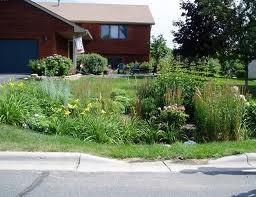

Commercial solutions for stormwater pollution
Dirt, oil, and debris that collect in parking lots and paved areas can be washed into the storm sewer system and eventually enter local waterbodies.
- Sweep up litter and debris from sidewalks, driveways and parking lots, especially around storm drains.
- Cover grease storage and dumpsters and keep them clean to avoid leaks.
- Report any chemical spill to the local hazardous waste cleanup team. They’ll know the best way to keep spills from harming the environment.
Construction solutions for stormwater pollution
Erosion controls that aren’t maintained can cause excessive amounts of sediment and debris to be carried into the stormwater system. Construction vehicles can leak fuel, oil, and other harmful fluids that can be picked up by stormwater and deposited into local waterbodies.
- Divert stormwater runoff away from disturbed or exposed areas of the construction site.
- Install silt fences, vehicle mud removal areas, vegetative cover, and other sediment and erosion controls and properly maintain them, especially after rainstorms.
- Prevent soil erosion by minimizing disturbed areas during construction projects, and seed and mulch bare areas as soon as possible.
Agriculture solutions for stormwater pollution
Lack of vegetation on streambanks can lead to erosion. Overgrazed pastures can also contribute excessive amounts of sediment to local waterbodies. Excess fertilizers and pesticides can poison aquatic animals and lead to destructive algae blooms. Livestock in streams can contaminate waterways with bacteria, making them unsafe for human contact.
- Keep livestock away from streambanks and provide them a water source away from waterbodies.
- Store and apply manure away from waterbodies and in accordance with a nutrient management plan.
- Vegetate riparian areas along waterways.
- Rotate animal grazing to prevent soil erosion in fields.
- Apply fertilizers and pesticides according to label instructions to save money and minimize pollution.
Forestry solutions for stormwater pollution
Improperly managed logging operations can result in erosion and sedimentation.
- Conduct preharvest planning to prevent erosion and lower costs.
- Use logging methods and equipment that minimize soil disturbance.
- Plan and design skid trails, yard areas, and truck access roads to minimize stream crossings and avoid disturbing the forest floor.
- Construct stream crossings so that they minimize erosion and physical changes to streams.
- Expedite revegetation of cleared areas.
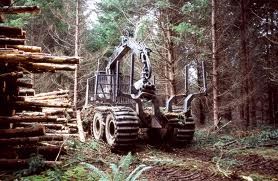
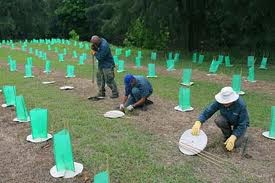
Automotive Facilities solutions for stormwater pollution
- Uncovered fueling stations allow spills to be washed into storm drains. Cars waiting to be repaired can leak fuel, oil, and other harmful fluids that can be picked up by stormwater.
- Clean up spills immediately and properly dispose of cleanup materials.
- Provide cover over fueling stations and design or retrofit facilities for spill containment.
- Properly maintain fleet vehicles to prevent oil, gas, and other discharges from being washed into local waterbodies.
- Install and maintain oil/water separators.
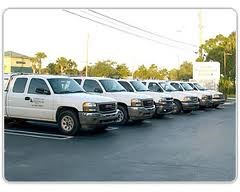

What is an MS4?
Definition of a Municipal Separate Storm Sewer System (MS4)
The term MS4 does not solely refer to municipally-owned storm sewer systems, but rather is a term with a much broader application that includes, in addition to local jurisdictions: State departments of transportation, public universities, local sewer districts, public hospitals, military bases and prisons. An MS4 is not always just a system of underground pipes; it can include roads with drainage systems, gutters, and ditches.
Under the 1987 Clean Water Act Amendments, the U.S. EPA developed new regulations to address storm water that might impact water quality. These new “Municipal Separate Storm Sewer System” (MS4) regulations were set up in two Phases dependent upon population and are enforced by the Environmental Protection Agency's (EPA) National Pollutant Discharge Elimination System (NPDES) which grants local regulatory authority to State governments, including Virginia's Department of Environmental Quality (DEQ).
- Phase I, issued in 1990, requires medium and large cities or certain counties with populations of 100,000 or more to obtain NPDES permit coverage for their stormwater discharges.
- Phase II, issued in 1999, requires regulated small urbanized areas, as well as small rural areas that are designated by the permitting authority, to obtain NPDES permit coverage for their stormwater discharges.
MS4 designation includes cities, towns, universities, colleges, correctional facilities, hospitals, conservancy districts, homeowner’s associations and military bases located within mapped urbanized areas, as delineated by the U.S. Census Bureau, or, for those MS4 areas outside of urbanized areas, serving an urban population greater than 7,000 people. In addition to these generalized criteria, designation of MS4 entities is potentially determined by other factors, including population growth and documentation which indicates water quality impairments.
Importance of SWMP
The purpose of the Stormwater Management Plan is to implement programs and practices to control polluted storm water runoff.
The Virginia Stormwater Management Program includes both erosion and sediment control as well as stormwater management. It was developed to protect citizens, property and natural resources from unmanaged stormwater runoff.
During construction, a permit may be required for erosion and sediment control. These land disturbance permits are issued by localities as part of their erosion and sediment control program. DCR also conducts reviews of local erosion and sediment control programs.
A stormwater permit may be required to discharge stormwater from a construction activity. Such a permit may also be required to discharge stormwater through a stormwater conveyance system owned or operated by a government entity. DCR administers these stormwater permits under Virginia Stormwater Management Program (VSMP) Permit Regulations , authorized by the Virginia Stormwater Management Act . As mandated by the Clean Water Act and the Code of Federal Regulations, federal permitting requirements have been incorporated into the VSMP permit regulations.
The Virginia stormwater act and VSMP permit regulations provide the ability to manage the quantity and quality of stormwater runoff on a construction site as well as on a regional or watershed basis.
Quantity of Stormwater Runoff – Compared with impervious surfaces, such as pavement or rooftops, previous surfaces, such as meadows and woodlands, absorb and filter rainfall and reduce runoff. When meadows and woodlands are developed, the increase in impervious surfaces increases the amount of runoff that occurs when it rains. This increase in runoff can overwhelm waterways, causing erosion, localized flooding and property damage.
Quality of Stormwater Runoff - Previous and impervious surfaces in urban areas collect pollutants, such as automobile oil, grease, sediment, bacteria from animal waste, excess nutrients and pesticides, and deposits from airborne pollutants. Stormwater runoff with high concentrations of these pollutants may enter nearby drinking water supplies and waterways when it rains.
Norfolk State University MS4 Documentation and Reports
NSU MS4 Annual Report